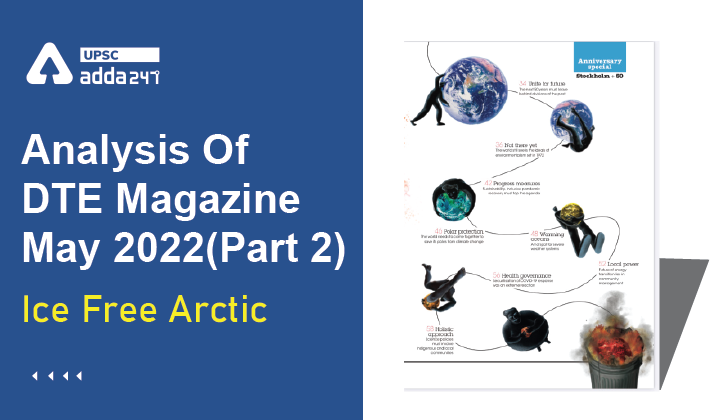Table of Contents
Introduction
- Planet Earth has been changing against the backdrop of a warming world.
- The shrinking sea-ice in the Arctic is not only a sign of climate change, it is causing the planet to warm more quickly.
- This is because more sunlight is being absorbed by the darker ocean, rather than being reflected back into space.
- Arctic sea-ice plays an important role in controlling the planet’s temperature, and any problem with this natural thermostat is a cause for concern.
India’s Presence in Arctic
- India’s presence in the Arctic is more benign, with a small research base named Himadri in Norway. Since 2013, the country is also an observer to the Arctic Council.
What is Arctic Council
- It is a forum of eight nations surrounding the Arctic.
- The council came into existence in the 1996 Ottawa Convention, and its members are Canada, Denmark, Finland, Iceland, Norway, Russia, Sweden and the US.
- The Russia-Ukraine war has thrown the coun- cil’s future into uncertainty.
Impact Of Global Warming on Arctic
- The effects of global warming are more prominent in the Arctic than Antarctica.
- This is because of the substantial northward alignment of continents, especially those emitting the most green- house gases (North America, Europe and Asia).
- This has two implications; first, the region gets heat- ed up much faster than Antarc-warm.
- Additionally, there is also the so-called Arctic Haze, a brown haze visible in the spring.
- Studies have confirmed that it is caused by industrial activities in the Northern hemisphere—especially coal burning.
- A 2021 study by the Finnish Meteorological Institute also detected soot from India travelling to the Arctic.
- This soot can reduce the albedo effect of the snow, accelerating glacial melting.
What is Albedo Effect?
- When the sea-ice is melted, the darker ocean surface is exposed, which absorbs about 90% of the sunlight hitting it. This results in warming of the region.
- This phenomenon is known as the Albedo effect, and it occurs because light surfaces reflect more heat than dark surfaces.
A grim future
- Estimates predict a grim future, with the Arctic’s summer sea ice completely disappearing by 2035.
- Ultimately, the increasing amount of ground being exposed in regions traditionally covered with snow will trigger a “tipping point”.
- This is where the warming of the atmosphere reaches a point where human interventions will no longer be able to halt it.
How to save the polar regions?
- To save the polar regions, urgent action in the form of a new global agreement is the only solution.
- A global effort is needed to minimise emissions and embrace sustainability.
- Countries should draft an Arctic Treaty System in line with its Antarctic counterpart.
- India can leverage its polar missions to promote international peace and science diplomacy.
- It can also control its pollution levels and prevent dust, soot that can migrate to the Arctic.



 TSPSC Group 1 Question Paper 2024, Downl...
TSPSC Group 1 Question Paper 2024, Downl...
 TSPSC Group 1 Answer key 2024 Out, Downl...
TSPSC Group 1 Answer key 2024 Out, Downl...
 UPSC Prelims 2024 Question Paper, Downlo...
UPSC Prelims 2024 Question Paper, Downlo...





